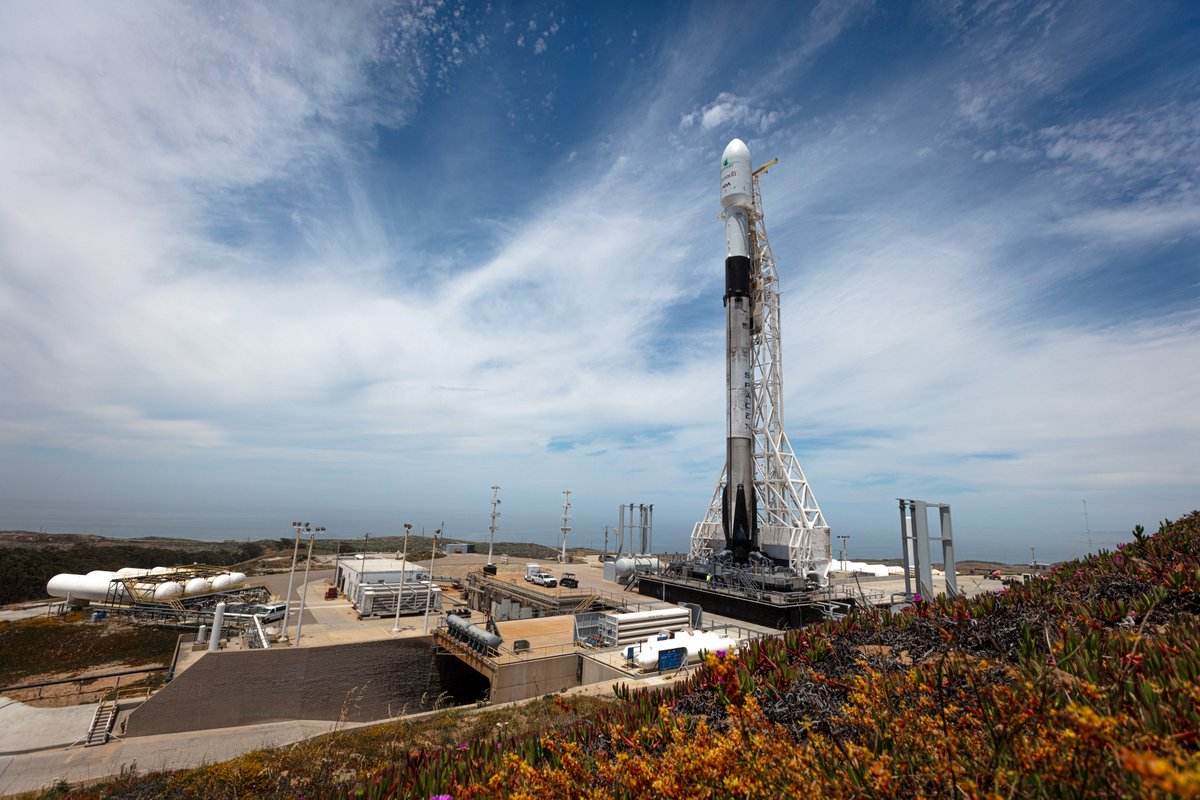
SpaceX will launch another 50 Starlink internet satellites Friday from Vandenberg Space Force Base in California, continuing what’s expected to be a cadence of nearly one Falcon 9 launch per month this year at the West Coast spaceport.
Officials said last year that SpaceX would start launching some of its Starlink missions from California, potentially at a pace of one Falcon 9 flight per month. And that cadence has materialized since November, following a dearth of SpaceX missions from Vandenberg since the start of 2019.
SpaceX plans to launch a Falcon 9 rocket Friday from Space Launch Complex 4-East at Vandenberg with the company’s next cluster of 50 Starlink internet satellites. There are two instantaneous launch opportunities available at 9:12 a.m. PST (12:12 p.m. EST; 1712 GMT) and at 11:10 a.m. PST (2:10 p.m. EST; 1910 GMT).
The mission will mark the 150th flight of a Falcon 1, Falcon 9, or Falcon Heavy rocket since SpaceX debuted its launcher family in 2006. It will be the 21st SpaceX launch from Vandenberg, a military spaceport located on California’s rugged Central Coast between Los Angeles and San Francisco.
The launch will also be the second this week to carry Starlink satellites into orbit, following the liftoff of a Falcon 9 rocket Monday from Cape Canaveral with 46 of the privately-built broadband relay stations. Friday’s mission will be SpaceX’s 38th launch dedicated to deploying Starlink internet satellites.
SpaceX has launched 2,137 Starlink internet satellites to date, some of which have failed or been decommissioned. That makes SpaceX the owner of the world’s largest fleet of satellites,.
Each Starlink spacecraft weighs about a quarter-ton, and is fitted with communications antennas, a solar panel, laser inter-satellite links, and krypton-fueled ion thrusters for orbital maneuvers.
The Starlink network will number roughly 4,400 satellites when SpaceX is done building out the first phase of the network, spread among five different orbital “shells” at different altitudes and inclinations. SpaceX, founded and led by Elon Musk, has signaled it eventually intends to launch as many as 42,000 satellites.
The network beams high-speed, low-latency internet signals around the world, reaching consumers, underserved communities, and other potential users like the U.S. military.
The satellites launching Friday will head for an orbital shell at an altitude of 335 miles (540 kilometers) and an inclination of 53.2 degrees to the equator. The orbital parameters will require the Falcon 9 to perform an in-flight steering maneuver, or “dog-leg” to avoid flying over populated areas in the first few minutes of the flight.
The Falcon 9’s trajectory will hug the coast of California and Baja California as it heads southeast from Vandenberg over the Pacific Ocean.
SpaceX’s drone ship “Of Course I Still Love You” is positioned in the Pacific about 400 miles (650 kilometers) downrange from Vandenberg. The Falcon 9 rocket’s first stage will shut down and separate from the upper stage about two-and-a-half minutes into the mission, then begin a descent back into the atmosphere, targeting a vertical landing on the floating platform less than nine minutes after liftoff.
The reusable booster stage flying Friday is numbered B1063 in SpaceX’s fleet, and is making its fourth trip to space, following previous launches with the Sentinel 6 Michael Freilich oceanography satellite, a Starlink mission, and NASA’s Double Asteroid Redirection Test, or DART, mission.
The Falcon 9’s upper stage will fire two times to place the 50 Starlink satellites into orbit Friday. The first burn will put the payloads into a transfer, or parking, orbit, then a second maneuver will circularize the orbit at an average altitude of about 193 miles (311 kilometers).
The satellites will be released from the Falcon 9 rocket nearly 63 minutes into the mission, then begin post-launch checkouts, deploy their solar arrays, and begin climbing to their operational altitude.
Email the author.
Follow Stephen Clark on Twitter: @StephenClark1.
"now" - Google News
February 25, 2022 at 01:12PM
https://ift.tt/IHCA3pJ
Fifty more Starlink satellites ready for launch Friday – Spaceflight Now - Spaceflight Now
"now" - Google News
https://ift.tt/w7mFeKa
Bagikan Berita Ini














0 Response to "Fifty more Starlink satellites ready for launch Friday – Spaceflight Now - Spaceflight Now"
Post a Comment